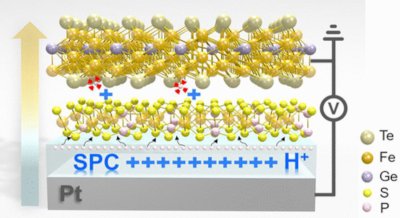A team of researchers, led by Igor Barsukov at the University of California, Riverside, in collaboration with researchers at Helmholtz-Zentrum Dresden-Rossendorf, the University of Utah, and the University of California, Irvine, has demonstrated efficient spin transport in an antiferromagnet/ferromagnet hybrid that remains robust up to room temperature. The researchers observed coupling of magnonic subsystems in the antiferromagnet and ferromagnet and recognized its importance in spin transport, a key process in the operation of spin-based devices.
Antiferromagnets have zero net magnetization and are insensitive to external magnetic field perturbations. Antiferromagnetic spintronic devices hold great promise for creating future ultra-fast and energy-efficient information storage, processing, and transmission platforms, potentially leading to faster and more energy-efficient computers. However, in order to be useful for applications impacting everyday life, the devices need to be able to operate at room temperature. One of the key factors in realizing antiferromagnetic spintronics is the injection of spin current at the antiferromagnetic interface. Previously, efficient spin injection at these interfaces was realized at cryogenic temperatures.
